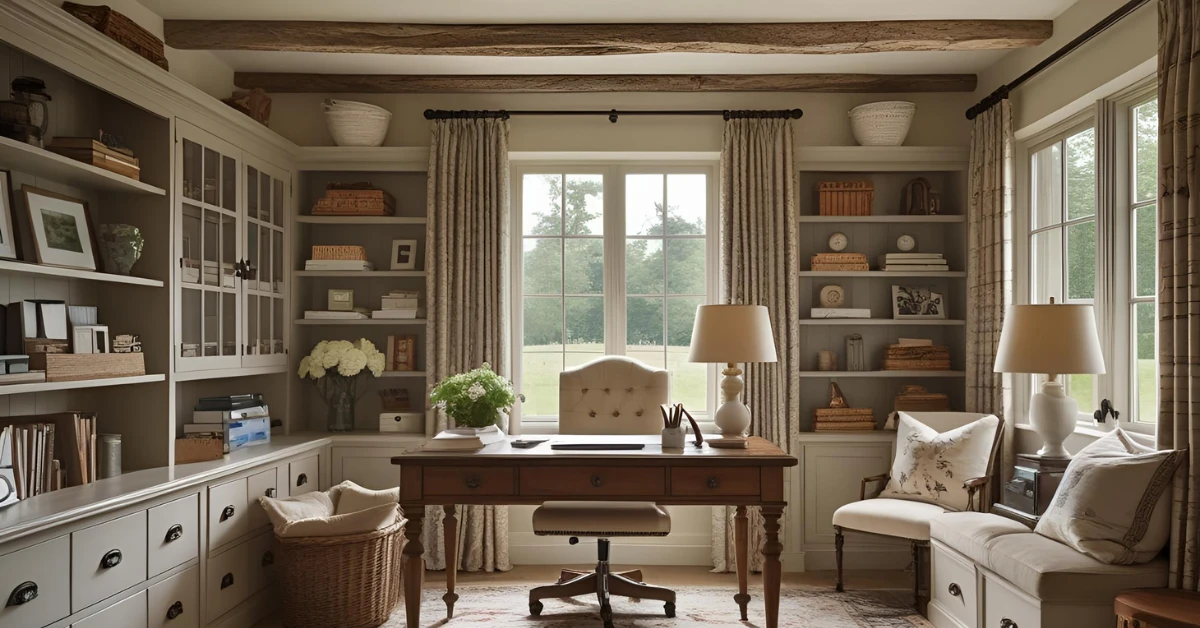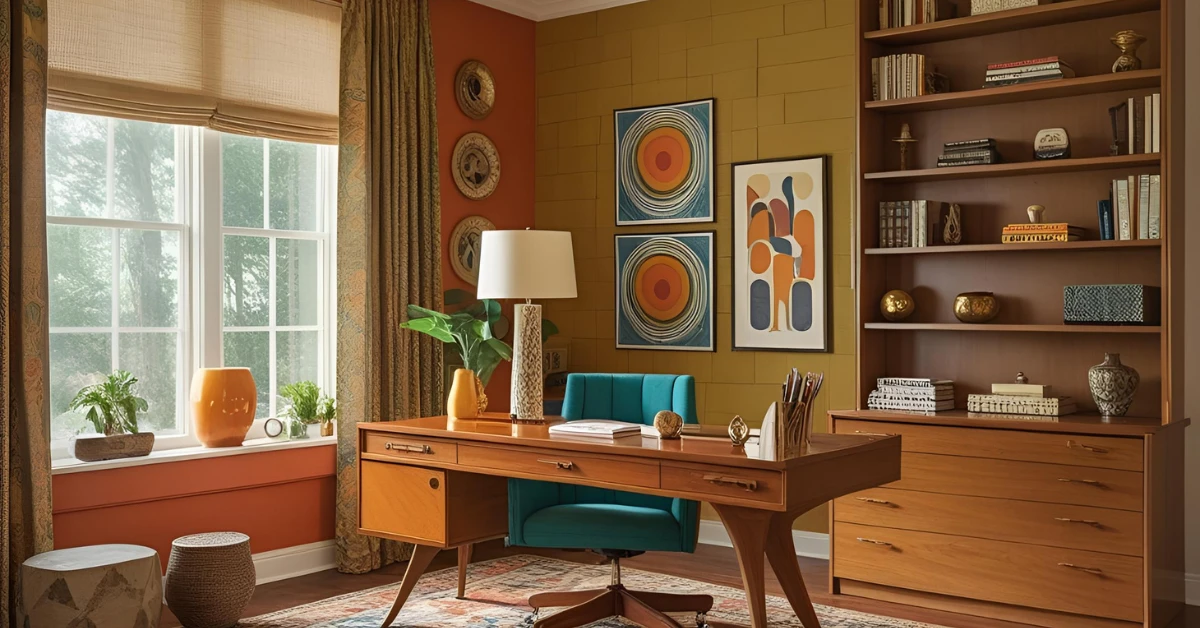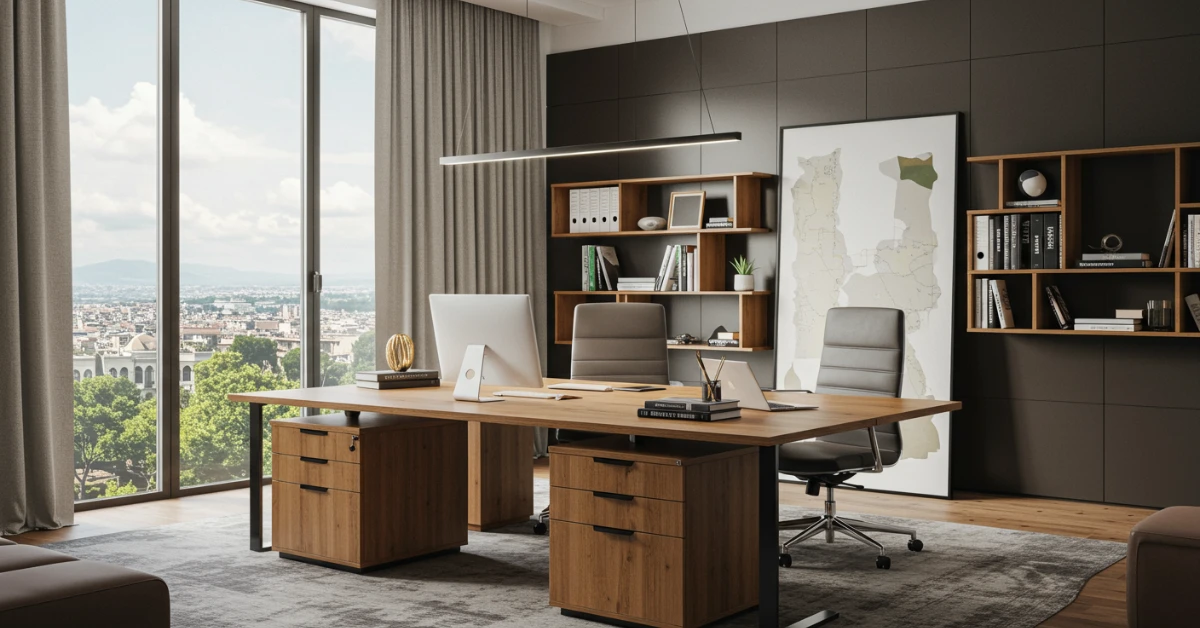5 Minimalist Office Design Ideas That Inspire
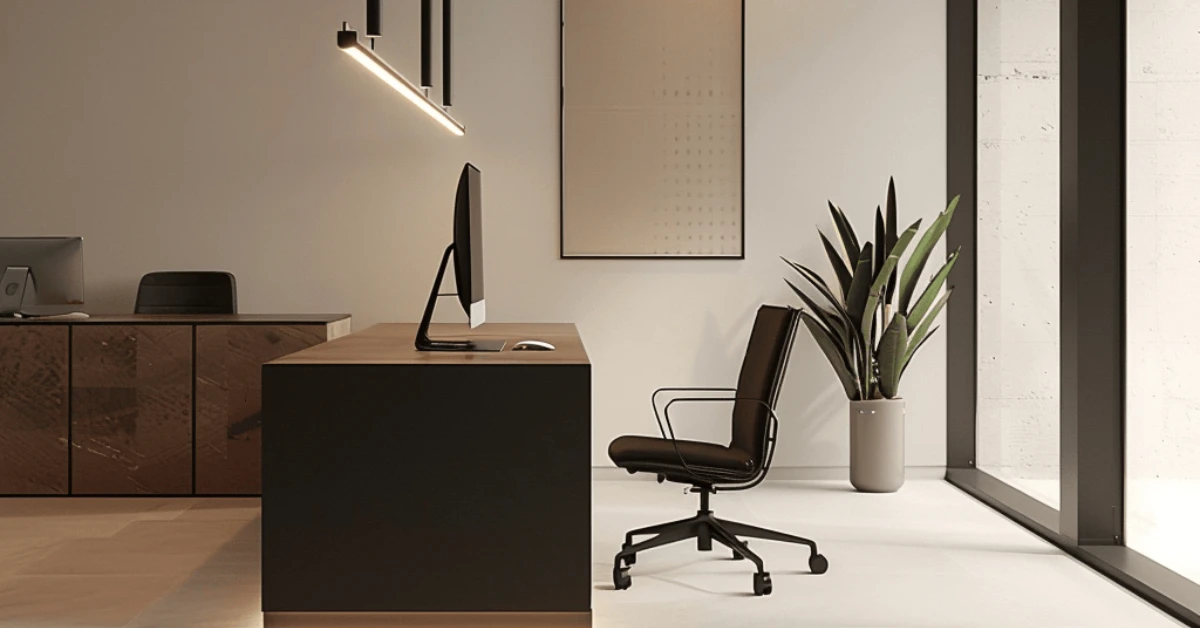
Minimalist office design is more than a visual aesthetic it’s a powerful approach to work-life harmony that fosters clarity, productivity, and peace of mind. Whether you’re setting up a home office, redesigning a corporate space, or simply looking for ways to streamline your desk, the minimalist office concept offers a timeless and practical solution. In this guide, we’ll explore actionable design tips, real-life examples, and expert insights to help you build a space that truly works for you.
What Is a Minimalist Office?
A minimalist office is a workspace intentionally designed with simplicity, functionality, and calm in mind. It focuses on what’s essential removing visual clutter and keeping only items that serve a purpose or bring joy. Think neutral colors, clean lines, organized storage, and a strong emphasis on space efficiency.
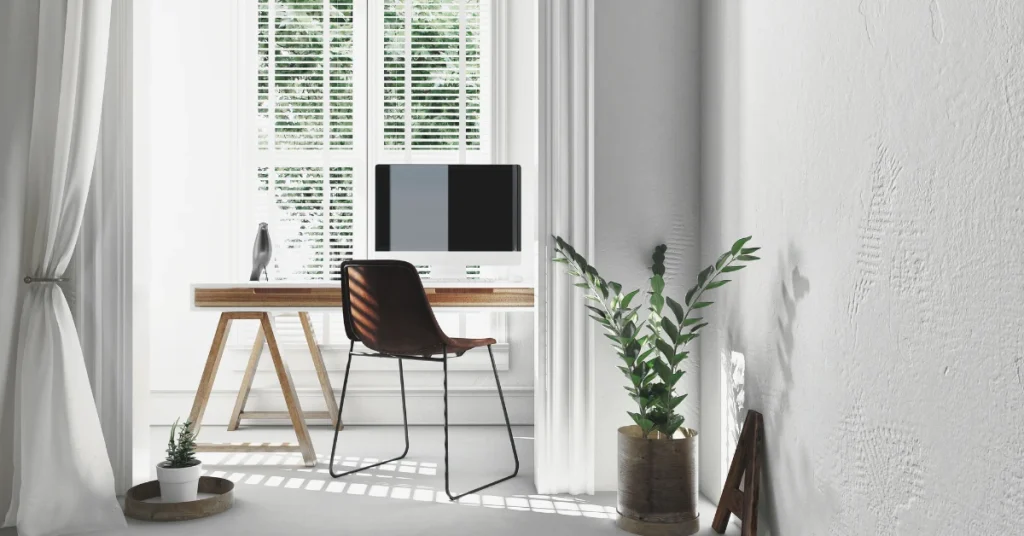
Key Characteristics:
- Neutral color palette (white, gray, beige, black)
- Functional furniture with clean lines
- Open space with minimal decor
- Natural lighting and minimal artificial elements
- Decluttered surfaces and hidden storage
“A minimalist office doesn’t mean a lifeless space. It’s about curating a setting that enhances focus and reduces noise — mentally and visually.”
Sophie Langston, Interior Designer
Why Choose a Minimalist Office?
Adopting a minimalist design offers several practical benefits beyond the aesthetic appeal:
1. Improved Productivity
By eliminating distractions, a minimalist workspace helps you focus better on your tasks. A clear desk can lead to a clear mind.
2. Reduced Stress
Clutter can cause visual and mental stress. Minimalist offices promote calm and balance, reducing overwhelm and anxiety.
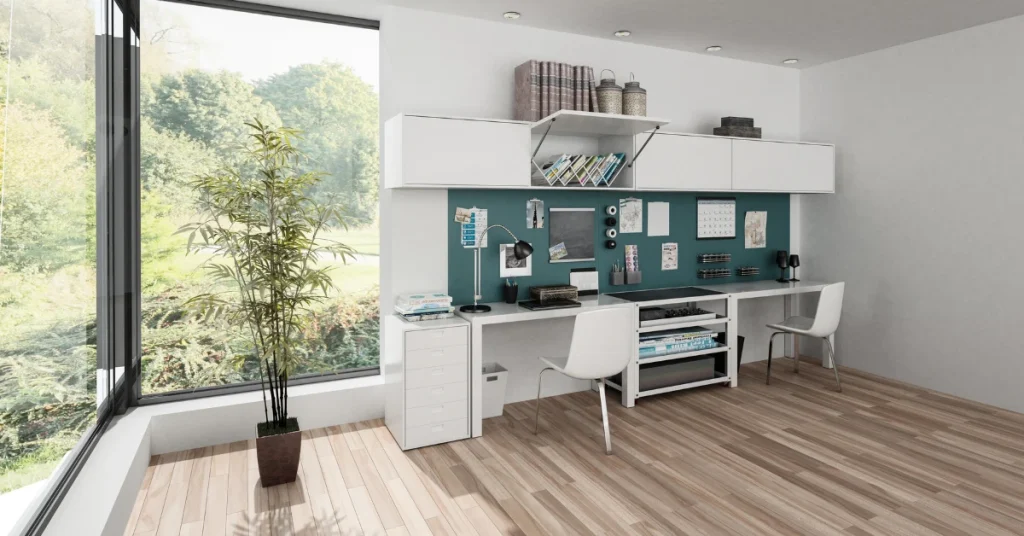
3. Easy Maintenance
Less clutter means easier cleaning and organization saving time and effort in the long run.
4. Enhanced Creativity
Contrary to belief, simplicity often fosters creativity by giving your mind room to wander and innovate without constant stimulation.
Designing Your Minimalist Office: Step-by-Step Guide
Step 1: Declutter First
Start by removing unnecessary items from your desk, drawers, and shelves. Ask yourself: Do I use this regularly? Does it serve a clear purpose?
Tips:
- Use the “one-touch rule” handle things once and make a decision.
- Digitize documents and get rid of paper piles.
- Donate or discard unused stationery and gadgets.
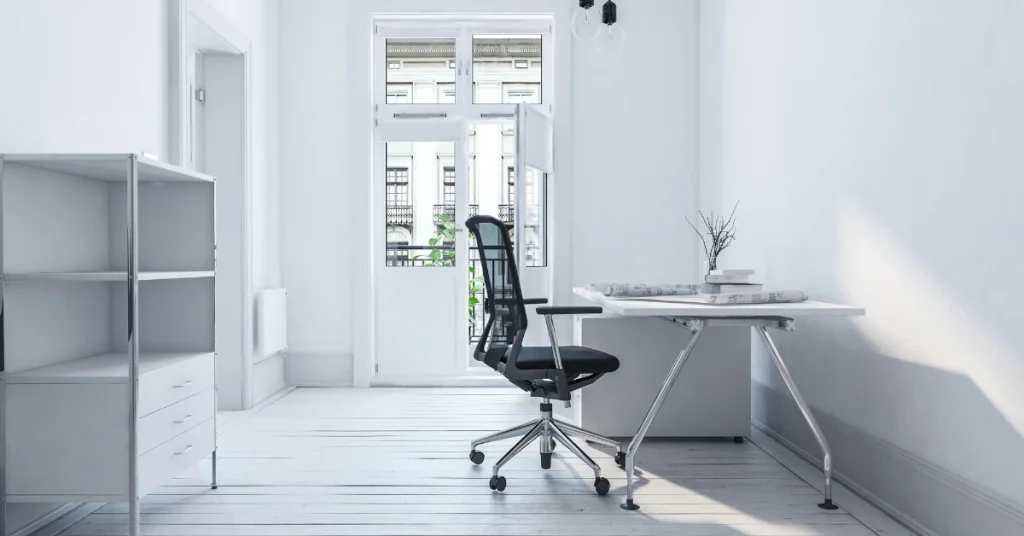
Step 2: Choose a Neutral Color Scheme
Colors set the mood of the space. Opt for calming, neutral shades that reflect natural light.
Popular Minimalist Colors:
| Color | Effect |
|---|---|
| White | Clean, expansive |
| Light gray | Soft and neutral |
| Beige | Warm and comforting |
| Black | Adds contrast and grounding |
Mix these for contrast but avoid too many patterns or bright tones.
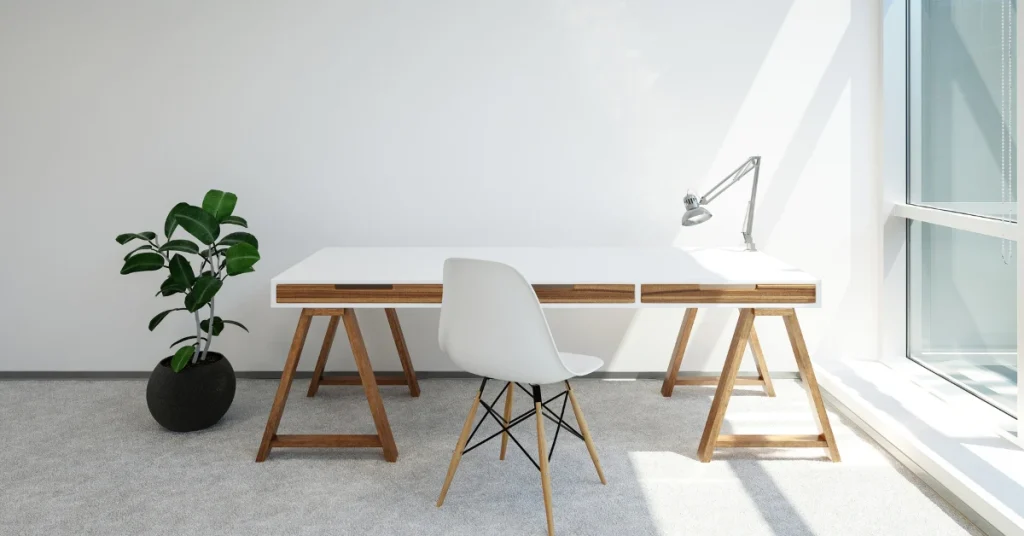
Step 3: Invest in Functional Furniture
Your furniture should combine style with utility.
Essentials:
- Simple desk with clean lines
- Ergonomic chair (preferably in neutral tones)
- Multi-purpose storage units (drawers that hide clutter)
- Floating shelves to save floor space
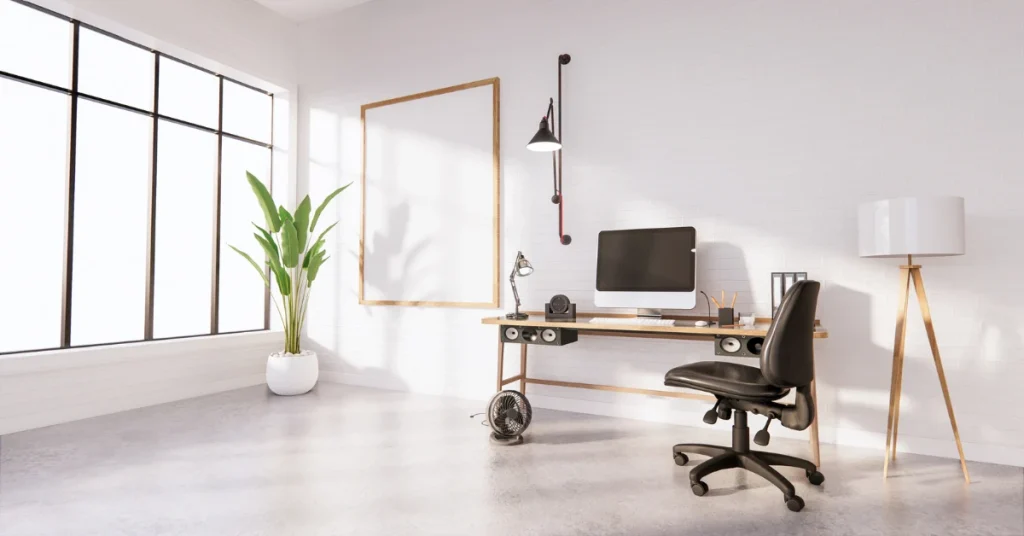
“Think of furniture as tools, not decor. Each piece should help you do your best work.”
Marcus Riley, Workspace Consultant
Step 4: Lighting Matters
Natural light is ideal. Position your desk near a window if possible. If not, choose warm LED lights that mimic daylight.
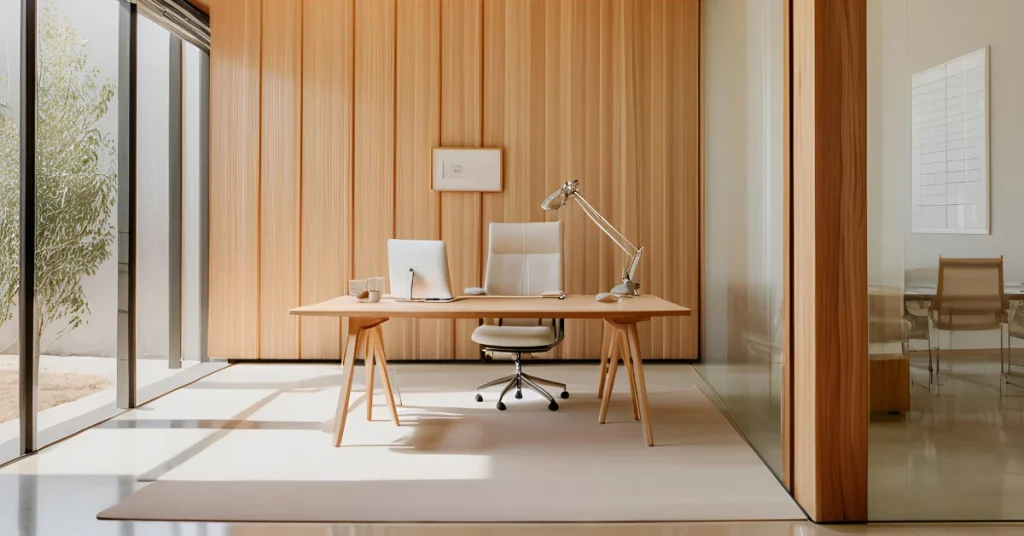
Lighting Tips:
- Use a minimalist desk lamp with adjustable brightness.
- Avoid fluorescent lights that create harsh glare.
- Consider a floor lamp for additional ambience.
Step 5: Add Minimal Decor
Decor isn’t off-limits it just needs to be intentional.
Thoughtful Additions:
- One or two framed prints
- A small plant or succulent
- A minimalist clock or calendar
- A single inspirational quote or vision board
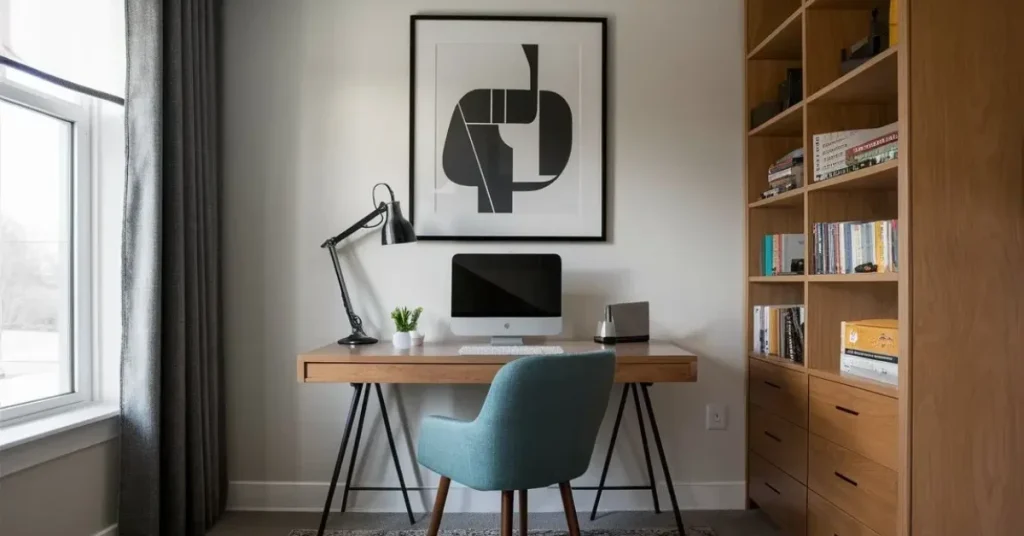
These items should enhance your mood, not create visual clutter.
Home Office vs. Corporate Minimalism
The principles of minimalism apply in both environments, but the implementation may vary slightly.
Home Office Tips:
- Create clear boundaries between work and personal space.
- Use multi-functional furniture like a foldable desk.
- Hide cables and tech gear with cord management tools.
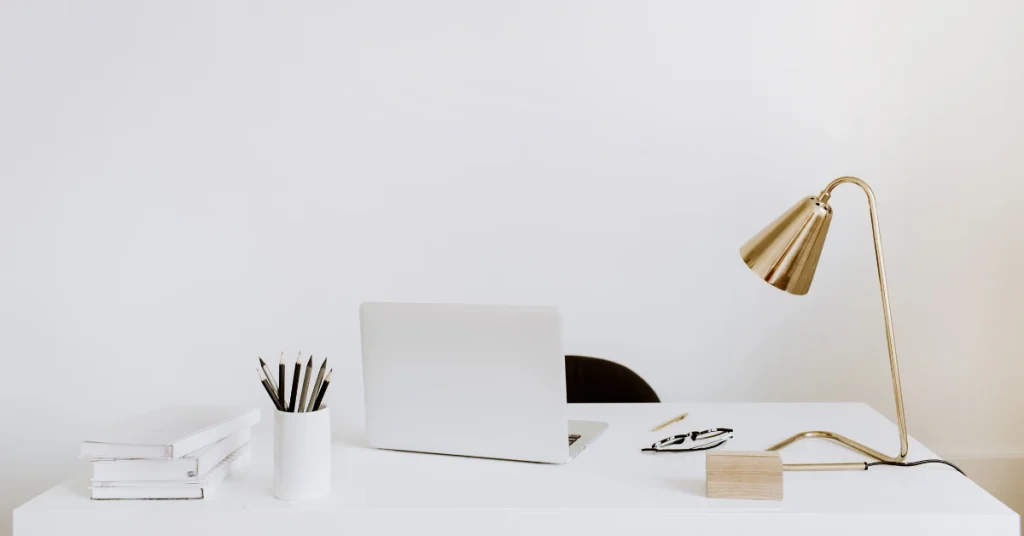
Corporate Office Ideas:
- Opt for uniform furniture for visual consistency.
- Use open-plan layouts with defined zones.
- Add collaborative minimalist areas with whiteboards and subtle decor.
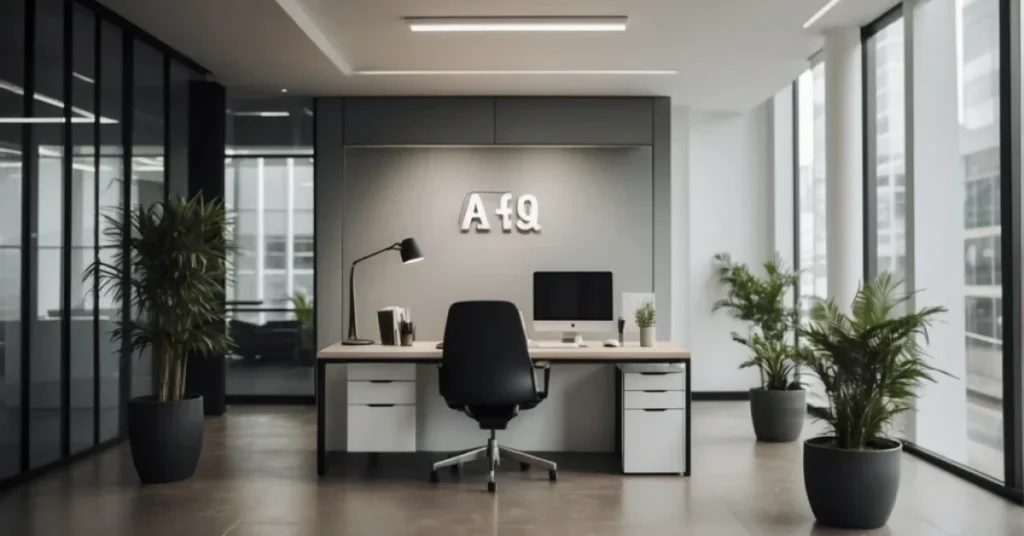
Organizing the Minimalist Office
Organization is key to maintaining a minimalist vibe. Storage solutions should be seamless and invisible when possible.
Smart Storage Ideas:
- Under-desk storage units
- Hidden drawers with cable organizers
- Pegboards or vertical organizers on the wall
- Minimalist filing cabinets with labels
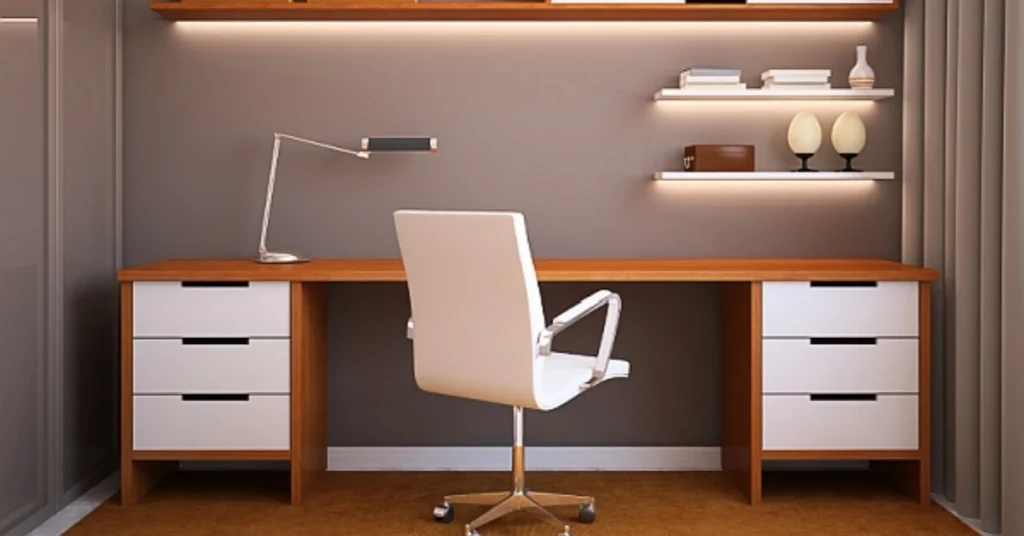
Desk Essentials Checklist:
- Laptop or desktop
- Notepad and pen (limit to 1–2 pens)
- Water bottle or mug
- A single decor piece or photo
- Task lighting
Keep everything else stored out of sight.
The Psychological Impact of a Minimalist Office
Studies show that our environment directly affects our mood, focus, and overall well-being.
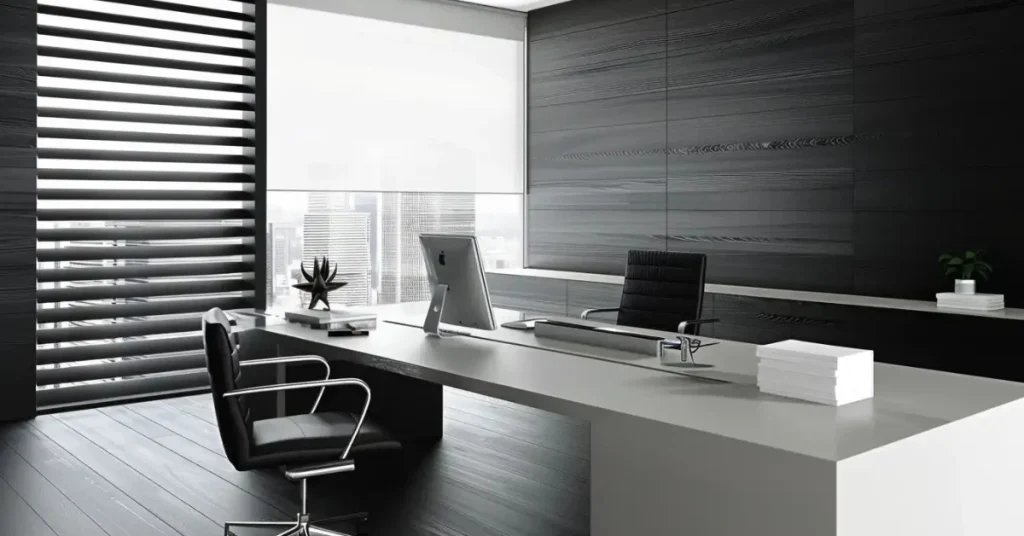
According to a study published in the Journal of Environmental Psychology, people working in cluttered spaces reported higher stress levels and lower productivity. Minimalist spaces were associated with improved cognitive performance and emotional stability.
“Designing a minimalist office is like creating a personal sanctuary for work. It aligns your space with your goals.”
Emily Tran, Psychologist and Workplace Wellness Advisor
Minimalist Office for Different Work Styles
For Creatives
Keep tools accessible but hidden when not in use. Use stackable storage boxes and minimal wall-mounted displays for inspiration.
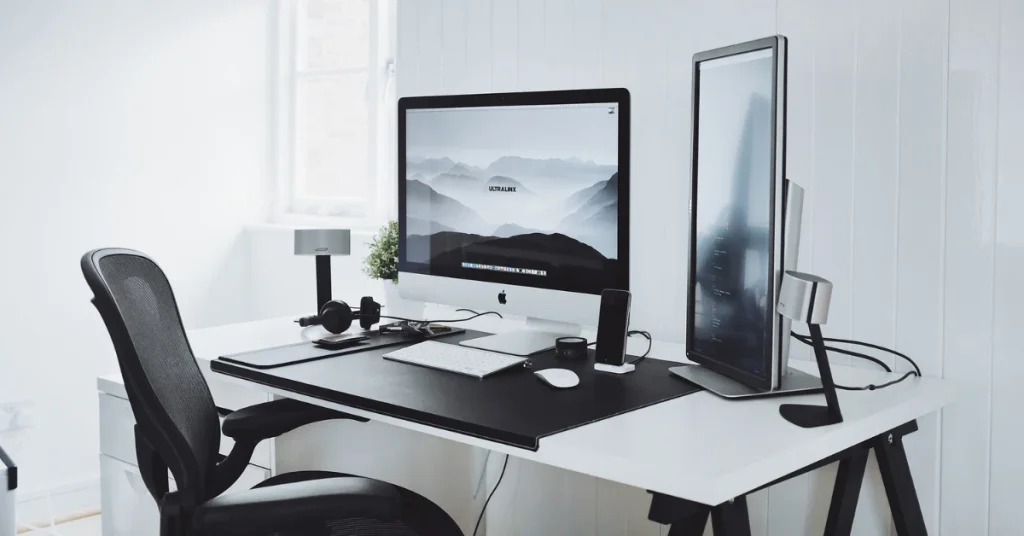
For Tech Workers
Invest in a sleek monitor setup, hidden cable management, and floating desks. Darker tones with accent lighting can enhance the tech vibe.
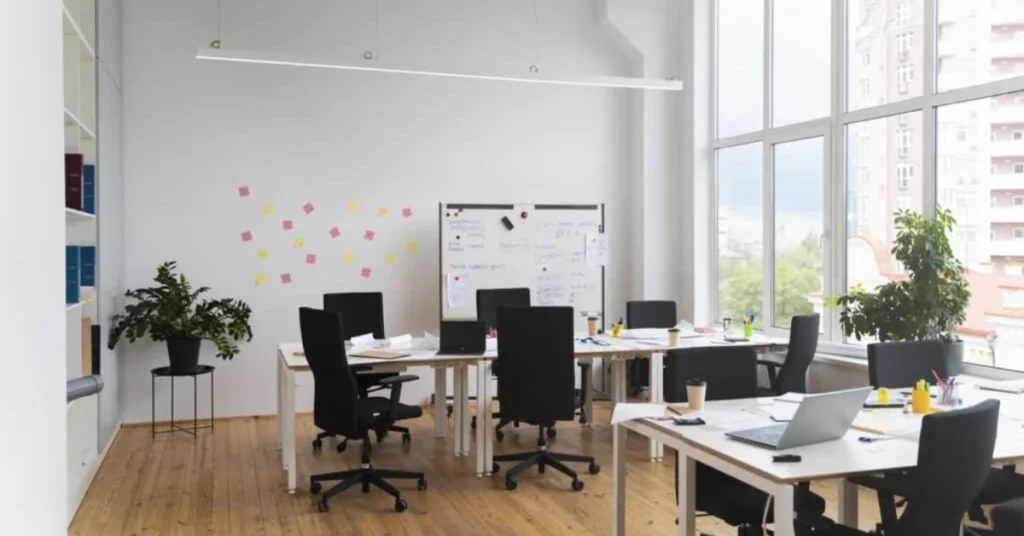
For Writers or Academics
Go for calming colors, large desk space, a comfy chair, and bookshelves with a strict organization method (e.g., vertical file holders or color-coding).
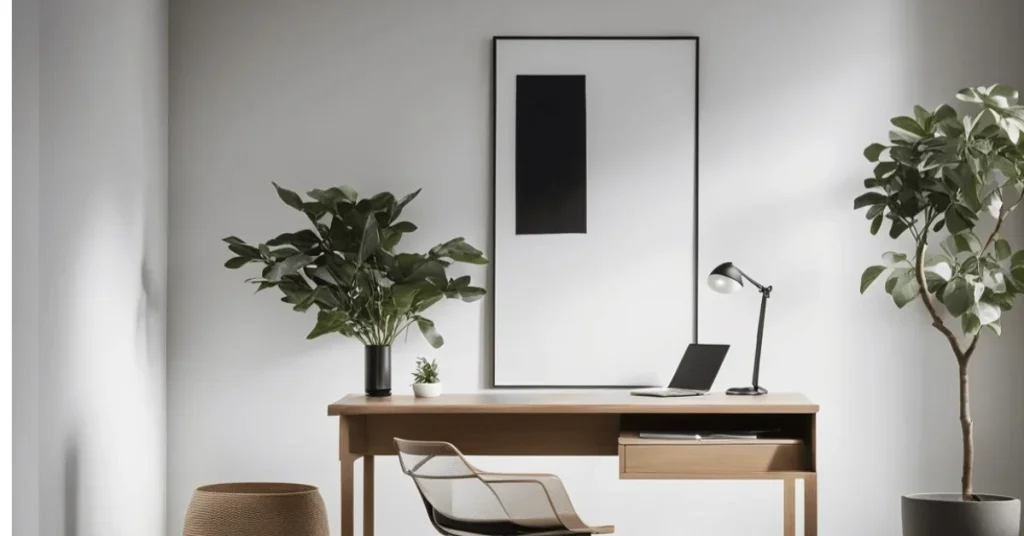
Common Minimalist Office Mistakes to Avoid
Even simplicity requires balance. Here are pitfalls to steer clear of:
- Too sterile: Add warmth with a plant or wooden textures.
- Neglecting comfort: Aesthetic shouldn’t outweigh ergonomics.
- Overdecorating: One or two meaningful items are enough.
- Ignoring personalization: Make the space feel like yours without clutter.
Real-World Example: From Chaos to Calm
James, a freelance developer, transitioned from a chaotic workspace to a minimalist office. By decluttering cables, simplifying his setup, and introducing neutral tones and natural light, he reduced distractions and increased his coding speed and focus.
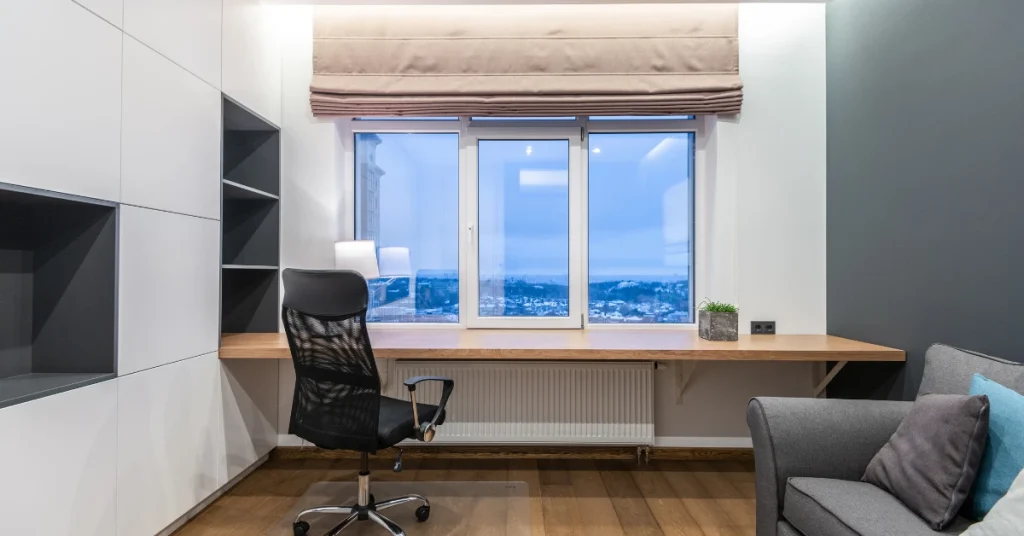
“I didn’t expect how much it would help mentally. My space feels like it finally reflects how I want to work.”
James W., Freelance Developer
Minimalist Office Ideas and Inspirations
Quick Ideas to Try Today:
- Swap your current chair for a white or black ergonomic model.
- Remove five items from your desk you haven’t used this week.
- Paint one wall a soft neutral shade.
- Add a plant snake plants or ZZ plants are low-maintenance.
- Use a single tray for your daily work essentials.
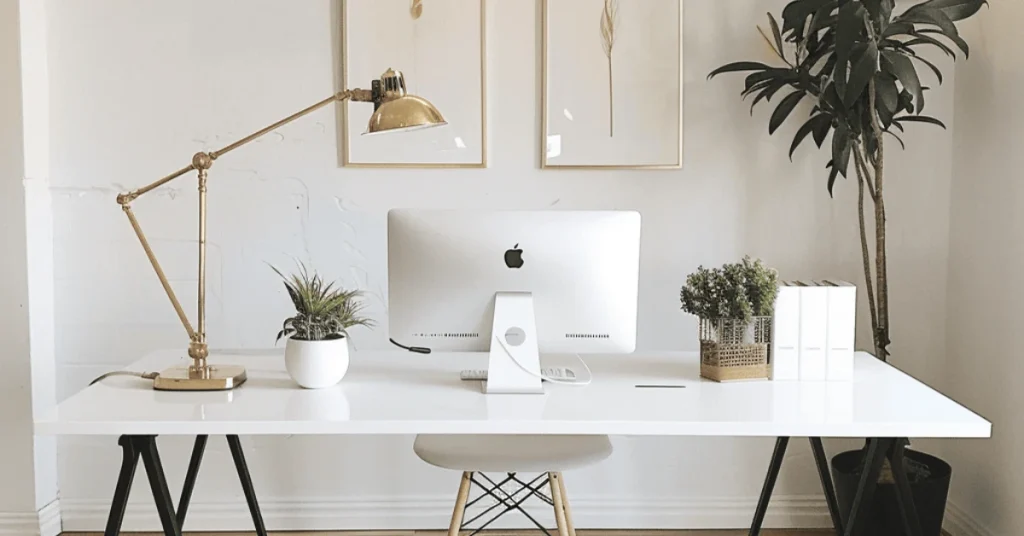
Pinterest & Instagram Worthy Styles:
- Scandinavian Minimalism (light woods, white tones)
- Industrial Minimalism (concrete, metal, monochrome)
- Japanese Zen (earthy tones, clean lines, mindfulness-driven)
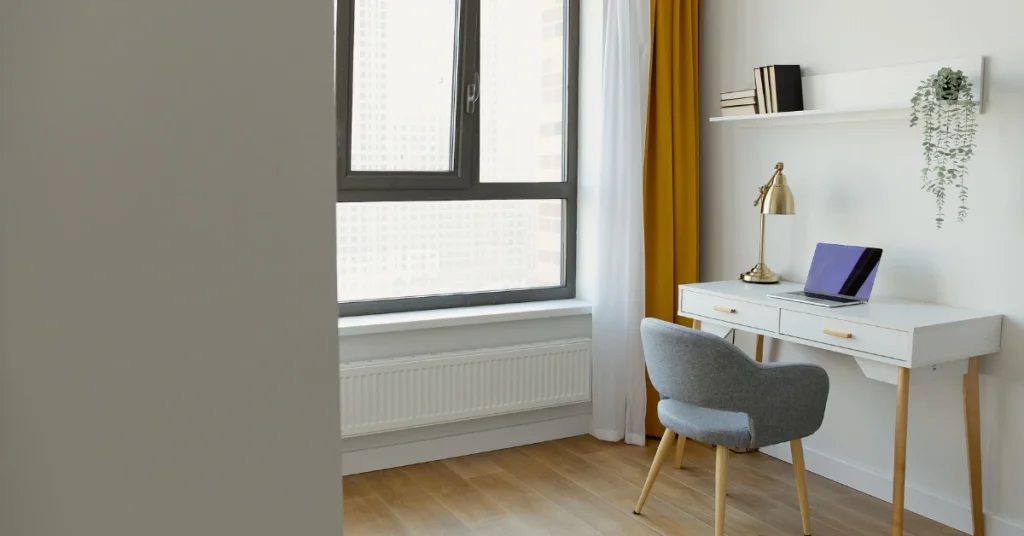
Minimalist Office and Sustainability
Minimalism naturally leans toward sustainability. Fewer purchases mean reduced waste. Investing in quality furniture that lasts longer helps both the environment and your wallet.
Eco-Friendly Tips:
- Choose bamboo or recycled wood furniture
- Opt for LED lighting
- Reuse decor or thrift unique minimalist pieces
- Digitize everything go paperless
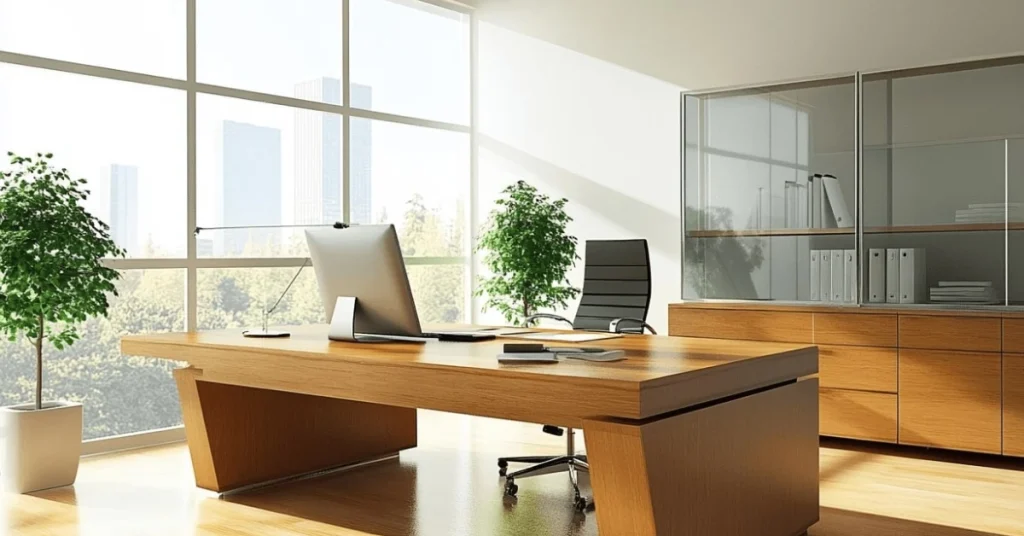
Final Thoughts: Building Your Ideal Minimalist Office
A minimalist office is more than a design trend it’s a lifestyle choice. By cutting through the noise and focusing on the essentials, you create a space that supports deep work, reduces stress, and encourages creativity. Whether in a spare bedroom or a full-scale office, minimalist principles help you reclaim your focus and design with purpose.
Ready to transform your workspace?
Start by decluttering one drawer or clearing your desktop small steps lead to big changes. Share your minimalist office journey or tips with us in the comments, and don’t forget to bookmark this guide for future inspiration.


